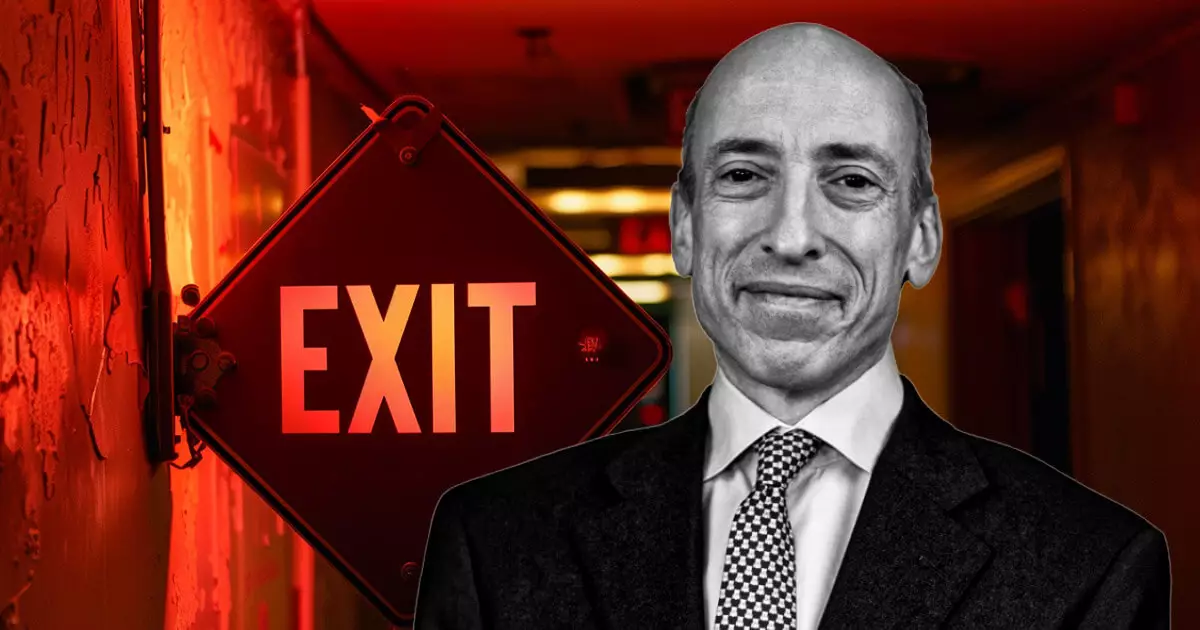Gary Gensler’s announcement to resign from his position as Chairman of the U.S. Securities and Exchange Commission (SEC) on January 20, 2025, marks a significant transition not only for the Commission but also for the regulatory landscape of the financial markets. Gensler, who has held this pivotal role since April 2021, recently expressed his appreciation for the mission-driven culture of the SEC. He characterized the agency as an exemplary institution dedicated to protecting investors and ensuring market integrity. This sentiment reflects his belief in the SEC’s vital role in maintaining the United States’ reputation as a leader in global capital markets.
Throughout his tenure, Gensler’s leadership has been marked by a robust approach to regulating emerging technologies, especially within the cryptocurrency landscape. Under his guidance, the SEC took notable enforcement actions against significant players in the market, including lawsuits against Binance, Coinbase, and Kraken. These actions were rooted in concerns over compliance with securities regulations, underscoring Gensler’s commitment to safeguarding investors while navigating the complexities of a rapidly evolving financial ecosystem.
The Evolution of Cryptocurrency Regulations
Gensler’s regulatory stance on cryptocurrencies and digital assets has stirred considerable debate. Initially resistant to the idea of Bitcoin and Ethereum exchange-traded funds (ETFs), he later oversaw the approval of these products, a decision influenced by a landmark court ruling favorable to Grayscale. This ruling challenged the SEC’s consistent arguments regarding potential market manipulation, deeming them “arbitrary and capricious.” This evolving perspective highlights the ongoing tension between innovation in the cryptocurrency space and the necessity of regulatory frameworks that protect investors.
As Gensler prepares to step down, his mixed legacy encompasses both significant advancements in regulatory structure, particularly regarding crypto assets, and criticisms over his heavy-handed approach. This duality raises questions about the future direction of the SEC as it seeks to balance innovation and protection in its regulatory strategy.
The Impending Leadership Shift
As President-elect Donald Trump prepares to assume office, the SEC is poised for further transformation. The uncertainty surrounding Gensler’s successor creates an intriguing atmosphere within the Commission, which currently finds itself split politically between Democrats and Republicans. Speculation abounds regarding potential candidates to fill the vacancy, including names such as Brian Brooks, Dan Gallagher, and Hester Peirce. Each of these individuals brings distinct perspectives that could significantly shape the future regulatory landscape.
The SEC’s direction under a new leader will likely reflect ongoing debates concerning the role of government oversight in the burgeoning tech-driven financial landscape. With the cryptocurrency industry continuing to expand and evolve, the new chairman will need to navigate complex challenges, including investor protection, anti-fraud measures, and the facilitation of sustainable market growth.
Gary Gensler’s departure signals not merely a change in leadership but also a crucial inflection point for the SEC as it confronts ongoing challenges posed by financial innovation. The way regulators adapt to these developments in the crypto space will play an essential role in shaping the future of financial markets in the United States. As the Commission braces for this transition, stakeholders across the industry remain keenly attentive to how the regulatory environment will evolve in the years to come, emphasizing the enduring tension between innovation and regulatory restraint.


Leave a Reply